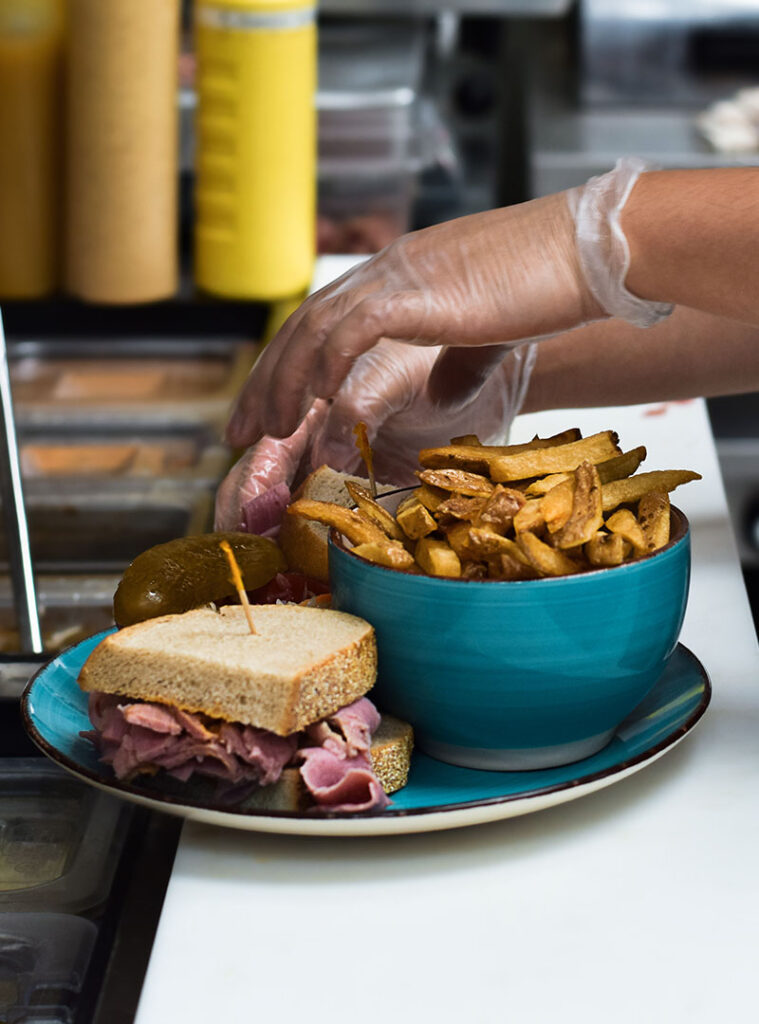Preventive Maintenance
We get it.
Nobody wants to talk about preventative Maintenance.
But ignoring future equipment problems doesn’t mean they won’t happen. In fact, the worst plan is no plan at all.
Let our experienced team help you eliminate downtime and extend your equipment life.
Valley Restaurant Repair, Inc will provide you with preferred costs for service, allow you to reduce utility costs, correct small problems before they become expensive, ensure safe operations, keep equipment in top condition to produce optimum quality products, and keep your maintenance budget under control.
With regularly scheduled preventive maintenance visits, you will avoid costly emergency visits and other headaches that result from neglect.

Areas of Focus
Clean Equipment
Cleanliness is a huge reflection on how chefs are maintaining their kitchen. If they are not keeping their equipment clean, the mechanics of the equipment may not be in good shape. Equipment that is cleaned regularly will function longer! Operators and their supply chain partners should not over look the importance of descaling boilers on steamers and dishwashers as well as other equipment using water. Steam requires regular descaling, especially in an area where there is a lot of minerals in the water that can lead to increased calcification. If there is lime buildup, this will cause bad heat transfer — utility usage could double, even triple! Operators using steamers intensively, especially schools should have a program in place to delime their equipment on a regular basis. Some steamers need descaled once every month or every other month, depending on hardness of the water. Unless you’re a service technician, no one should be touching boilers (hazardous to operators & other employees, may result in injury, lead to insurance claims, loss of valuable employees). Schedule preventative maintenance & allow ONLY service technicians to perform maintenance & service!
Abuse
There’s more to preventative maintenance than just cleaning & hiring technicians to conduct inspections and checks. Proper daily use of equipment also plays key factors in maintaining equipment. Misuse of equipment can be very expensive! If the operators see breakage after breakage, they need to contact a service technician to find out what the problem is. And importantly, determine if there was any abuse to the equipment. Carbon buildup, kinks and marks on the equipment can be the first indicators of equipment misuse! A door not closing properly indicates that someone might have been closing the doors with their feet, or even kicking them—a door even slightly ajar will ruin a gas valve and cause additional breakage.
Maintenance
Poor maintenance when it comes to gas grills, not only translates into poor performance, but also higher gas and energy costs! Although it seems like a simple and obvious statement, operators and chefs often overlook this fact as they focus intently on just getting the food hot enough, and out to the customer in a timely fashion.
That’s a reasonable concern, so it’s easy to forget about the added duties of preventative cleaning, repairs, checkups and tune-ups. But operators looking to extend their equipment for the long haul enhance their total cost of ownership and, basically, stay in business over time. If the operator or manager does not have a preventative maintenance contract for a service technician to maintain the equipment, then in five years, all the equipment may have to be replaced. This can potentially double your expenses over the years, thereby negating any worthwhile investments an operator made on top quality equipment.
Moreover, the ironic part is that operators and chefs, who ignore maintenance issues because they’re too focused on food production, will actually slow their food production over time! Chefs will get irritated that equipment is not working properly and they’ll have poor results during cooking. The more chefs & operators can reduce “emergency” calls, the more they’ll reduce stress of people working in the kitchen.
Safety
Temperature control and food safety issues take the forefront of operator priorities, but regularly calibrating temperatures is a common task operators often overlook. Even with a staff properly trained in food safety procedures, regularly calibrating walk-in coolers is just as important a part of the equation: proper setup of a variety of cold equipment, from walk-ins to ice machines, as well as the fundamentals of preventative maintenance, which includes calibration, cleaning, lubricating, & identifying the wear & tear of parts. Operators who neglect to have a service technician calibrate their walk-in coolers run the risk of their food temperatures rising above 41°F and into the danger zone of making customers sick. This type of neglect may lead to serious issues.
A deflector on an ice machine starts to fall apart & needs to be replaced but the operator says the cost is too high & the restaurant is not running out of ice, so fixing the machine is not considered an emergency. But every time employees refill ice, they interact with the deflector that’s not holding on and now you’re dealing with employee hazards! Poor temperature readings on cold equipment are actually symptoms of a larger problem. That’s when service technicians become teachers who enlighten operators on these shortcomings.
Technicians repair equipment that’s broken, dirty or not calibrated correctly. If controls are fine, machine is not dirty, and there’s nothing the technician can fix or solve for the problem of low temperatures, the question becomes: What are the food handlers doing that result in the temperature being out of compliance? Walk-in coolers with unsafe temperature readings appear to the operator as a problem with the equipment; actually, it was a problem with the way that the line cook handled the food. He or she was letting prepped products from the walk-in cooler sit on the line while going about other tasks, rather than immediately transferring products to cold pans before performing other tasks! At that point, food temps would get above 41°F. Cold pans tend to only hold food where it is, rather than cool it down further. Opening the walk-in doors frequently during the day can increase food temperatures to unsafe levels.
